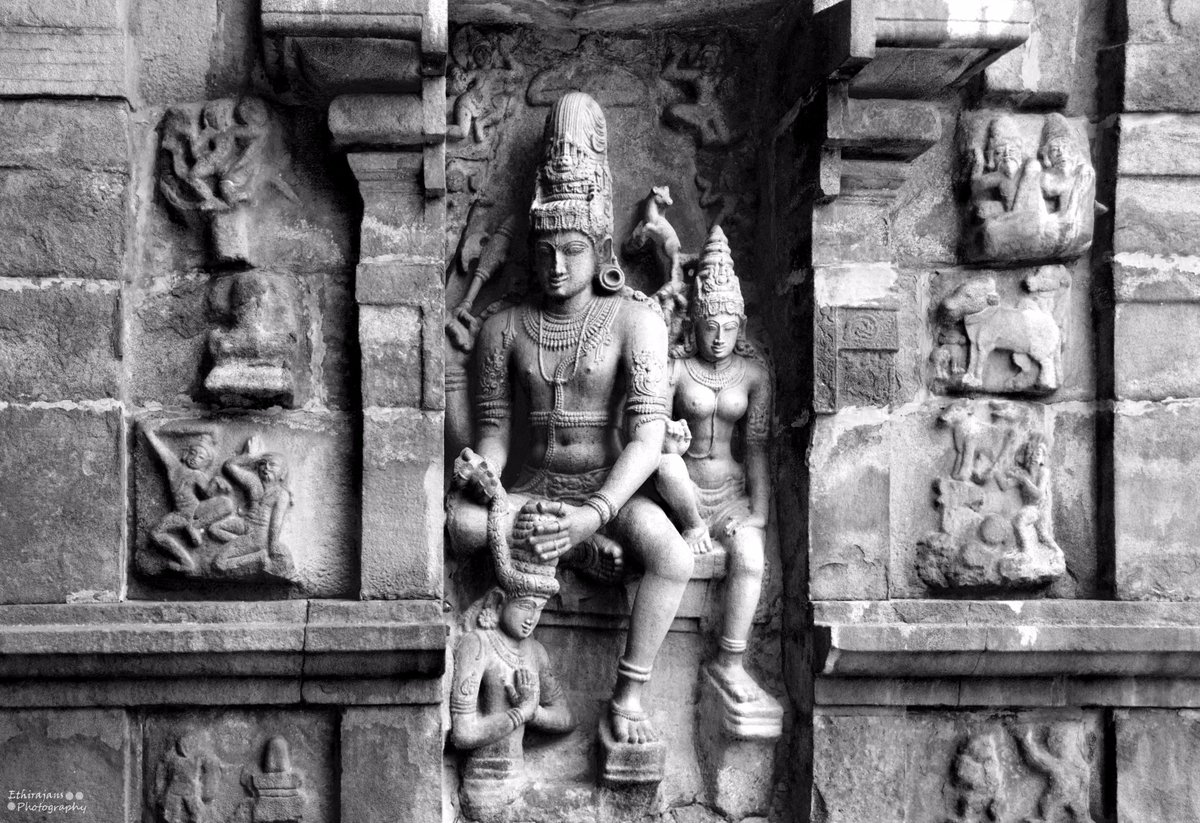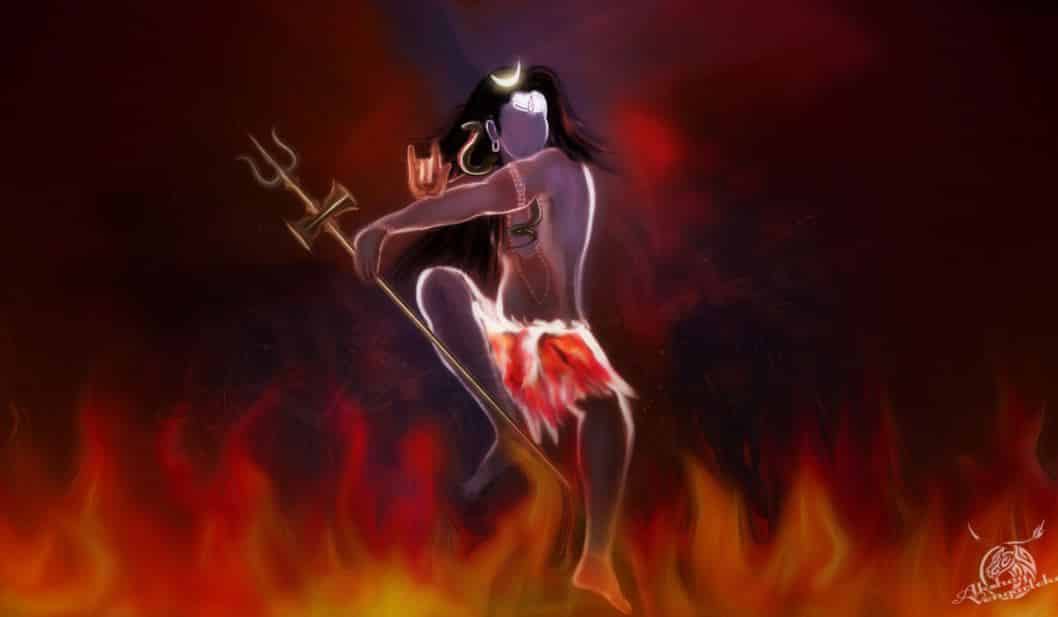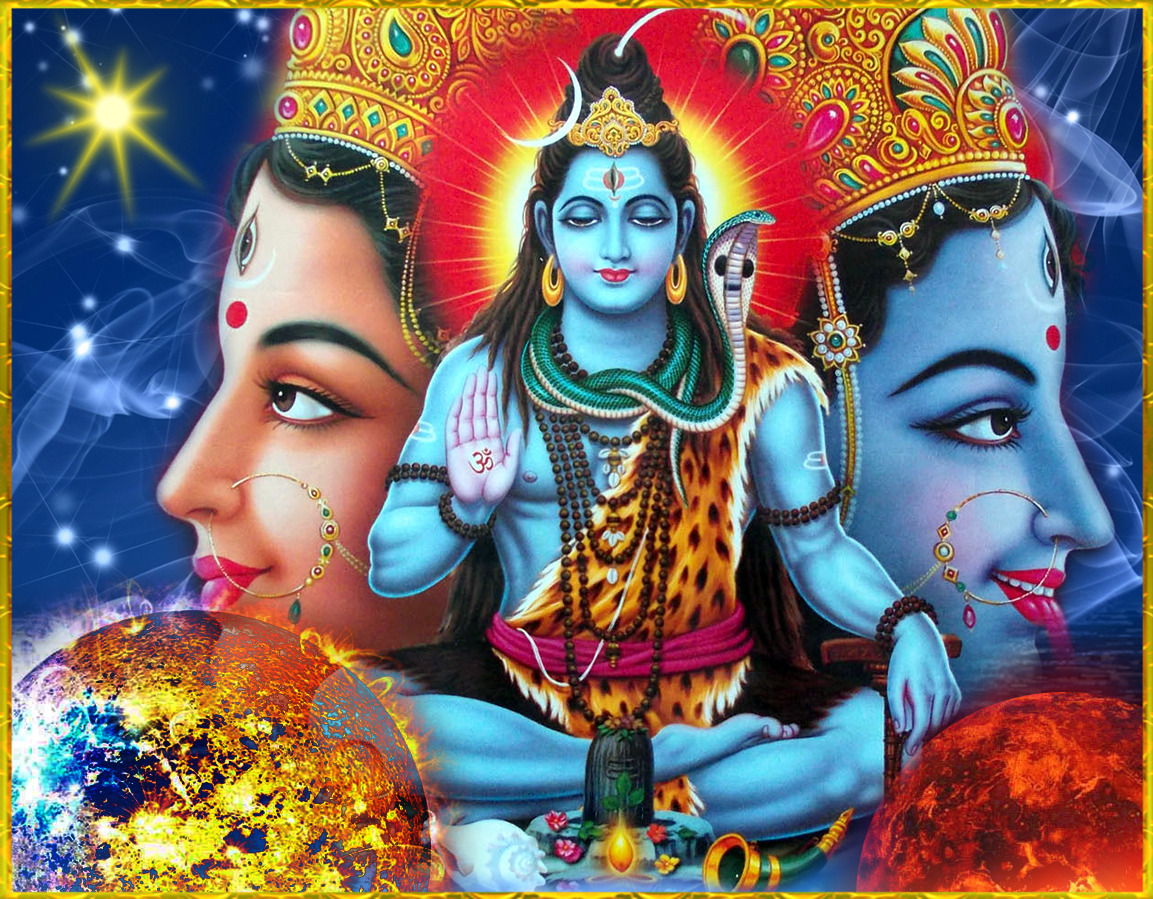No products in the cart.
Lord Shiva has so many different names like- Mahadeva, Mahayogi, Pashupati, Nataraja, Bhairava, Vishwanath, Bhava, and Bhole Nath. He is one of the most complex and powerful Hindu deities. Shiva is the destroyer—the most powerful deity in the Hindu pantheon and one of the godheads in the Hindu Trinity, along with Brahma and Vishnu. Shiva is’shakti’ or power. Hindus segregate his shrine from the shrines of other deities in the temple to honour this truth.
Shiva is commonly represented in temples as a phallic symbol called the ‘linga,’ which signifies the forces required for life on both the microcosmic and macrocosmic levels—both the world in which we dwell and the cosmos as a whole. The ‘linga’ is situated in the heart of a Shaivite temple beneath the spire, symbolising the earth’s navel.
Shiva had a life full with paradoxes, wonder, and beauty. When confronted with challenges, he had to step carefully, examine himself deeply, occasionally go against his natural instincts, and adjust when necessary.
Shiva appears to have been a neglected deity within the pantheon of gods in his early and few appearances, but he has now become one of the most omnipresent.
Shiva exemplifies balance in his life choices in an unusual way, because he is both Mahayogi, the ascetic, and Shankara, the beneficent married one. He juggles two opposing forces.
Despite the fact that Lord Shiva is considered to be ‘Nirakar’ in Hindu dharma, there are various forms and attributes of Lord Shiva that are familiar to everyone throughout the world.
- Panchanana Shiva
- Anugrahamurthy
- Ugramurthy
- Tandavamurthy
- Dakshinamurthy
- Lingodbhava-Murthy
- Bhikshatana-murthy
- Hridaya-murthy
- Ardhanarisvara
1. Panchanana Shiva

Shiva is depicted as having five faces in several temples. Isana, Tatpurusha, Aghora, Vamadeva, and Sadjyota are the names and aspects given to each of these faces. It faces south-east and depicts Shiva’s Iswara aspect, also known as Sada Shiva or the Eternal Shiva. Tatpurusha, which faces east, portrays Shiva’s misguided Purusha or ego. Aghora, who faces south, represents Shiva’s destructive and regenerative aspects, which may consume life and prepare for renewal. Vamadeva, which faces north, represents Shiva’s healer and preserver aspect. Sadyojata, which faces west, represents Shiva’s creative aspect.
2. Anugrahamurthy

When Lord Shiva is among his devotees and family, he is the most tranquil, or should we say softer, side of the God of Destruction.
3. Ugramurthy
Other names for Ugramurthy include Raudra, Bhairava, Kankala, and Samharamurthy. When Shiva is enraged, this is his most terrible and ferocious form. Each of the forms is linked to Shiva in his destructive form, which he uses to exorcise the  world’s demons. They are as follows :
world’s demons. They are as follows :
- Kankala-bhairava: He took this shape after severing Brahma’s fifth head.
- Gajasura: He adopted this shape when he killed the demon Nila
- Tripurantakmurthy: He assumed this form when he demolished the towns of gold, silver, and iron created by three sons of Andhakasura
- Sarabhesamurthy: He assumed this form when he battled and killed Vishnu’s avatar, Narasimha.
- Kalarimurthy: He adopted this shape when he battled and killed Yama to save his disciple Markandeya
- Kamantakamurty: He assumed this form when he killed Manmaha – the deity of desire – during his penance because Manmaha troubled him.
- Andhakasura-vadha-murthy: He took this form after defeating Andhakasura, who thereafter became the leader of his army. Later in life, he was known as Bhringi
- Bhairavamurthy: This is a prominent form when Shiva is associated with Tantric hidden cults, and it entails Shiva’s worship in this form in cremation sites and graveyards.
4. Tandavamurthy

Shiva is also regarded as a master of several dance styles. He is even credited with creating all dancing styles. All classical Indian dance (which is made up of 108 roots of forms) is thought to have originated from him, much as all yoga postures have their origins in Shiva’s forms. Shiva employed each of the dancing postures as a method of expression to relieve stress in the universe and to alleviate the suffering of his devotees. According to the Bible, he employed his dance styles to entertain both his wife and other gods.
About nine Shiva forms have been documented among these dancing techniques, with Nataraja being the most prominent. The monarch of dance, Nataraja, is well-known. Hindus, on the other hand, are more likely to have Nataraja forms in their homes than in temples. Ananda-tandava-murthy, in which Shiva dances in a happy and joyful mood, Uma-tandava-murthy, in which he dances with his consort Parvati, Tripura-tandava-murthy, in which he dances while slaying Tripurasura, and Urdhva-tandava-murthy, in which he dances in the air, are some of Shiva’s other dance forms.
5. Dakshinamurthy

This form depicts Shiva as a global teacher who imparts the mysteries of yoga, tantra, yantra, alchemy, art, science, history, wisdom, and magic to sages and saints, as well as gods and goddesses who are qualified to know the secrets. The term stuck because he passed on his wisdom while standing on top of the Himalayan high mountains, facing the Indian subcontinent to the south. This figure is seen seated on a high seat with one leg folded and the other resting on the Apasmarapurusha, the mistaken self, in a happy attitude. In one hand, he has the snake, and in the other, he has the fire. The snake signifies tantric wisdom, while the fire represents enlightenment in this illustration. The other two are Abhayamudra, or assurance stance, and Gnanamudra, or knowledge presentation position.
6. Lingodbhava-Murthy

This is arguably Shiva’s most well-known form, in which he is depicted as the absolute self by a Linga, and it is claimed to have neither beginning or end. According to legend, he revealed infinity to Brahma and Vishnu in the shape of a pillar of fire, and both Brahma and Vishnu were unable to discover the end of it. Shiva I is sitting with four arms in the centre of the Linga, while Brahma and Vishnu may be viewed from both sides.
7. Bhikshatana-murthy

Bhikshatana-murthy is Shiva in his ascetic form, a nomad roaming from place to place with a begging bowl made of human craftsmanship, immersed in his own thoughts and wisdom. In this guise, we may still see sages roaming the towns and jungles in the current period. They even use magic to draw attention or frighten the youngsters that follow them.
8. Hridaya-murthy

Also known as Harihara or Sankaranarayanan, this form of Shiva is depicted to show his reconciliation and friendship with Vishnu. The right half of the image is shown with the right half of Shiva, and the left half of the image is shown with the left half of Vishnu.
9. Ardhanarisvara

This is Shiva and Parvati’s united form, which depicts the union of Purusha and Prorate. The left half of Shiva in this form is the feminine left half of Parvati, and it is joined with Shiva’s masculine right half. And, rather of being a sum of two forms, the picture is one continuous shape. This shape is occasionally seen with Nandi in the backdrop or seated on the pedestal.
Shiva’s aspects- can apply in our daily lives
Shiva defies patriarchal gender expectations and the patriarchal concept that a man must constantly look powerful and decisive. Instead, he weeps profusely, wretchedly lamenting his deceased wife, unconcerned about what the rest of the world thinks. His sadness and tenderness are on full show.
Shaivic stories frequently depict the beneficial nature of marital conflict. The battles are spectacular, with both parties threatening, browbeating, and trying to persuade each other to come to an agreement.
Shiva defies gender roles that have been imposed by society. Shiva’s ability to handle such a powerful, almost insouciant wife is pleasantly surprise (Parvati). Shiva is the only god with an outspoken wife, and maybe the only god who does not strive to dominate. Only a confident male can coexist with a woman like her.
If the marriage partnership is to serve the purpose of supporting partners’ mental growth, loving couples might frequently push each other. Shiva and Parvati don’t believe in the quiet treatment, which many couples have used since the dawn of time. If anything bothers them, they deal with it immediately.
We may see Shiva’s ego management in his attitude toward his wives. He is the great yogi, the great knower, and while he understands how to play ultimate lord and master to an adoring Parvati, he also knows how to surrender completely to her in her shape as Devi when she is his wife.
In mainstream Hinduism, Shiva is associated with a certain element of creation, but in Saiva tradition, Shiva is Brahman Himself. He is everything: known and knower, support and support, creator and creation, Being and Non-Being, existence and non-existence. While we may assign different names to the many functioning elements of Brahman, they are all just His many forms. As a result, it’s critical to understand that Lord Shiva isn’t just an idol or a Shivalinga that people worship in temples and sacred sites for superstitious reasons. He is Brahman, the Unmanifested Being, who descends into lower realms of existence to project an alternative reality that we call the phenomenal world. We can only attain the Highest Truth, Shiva, concealed under the layers of phenomena by overcoming our delusion and gazing beyond the physical reality he portrays, which is only achievable through austerities and the grace Shiva.






